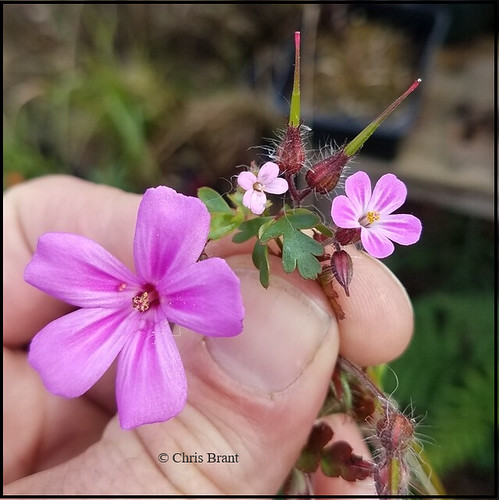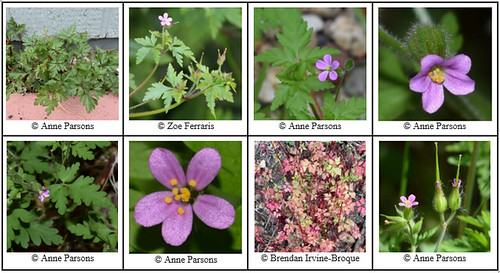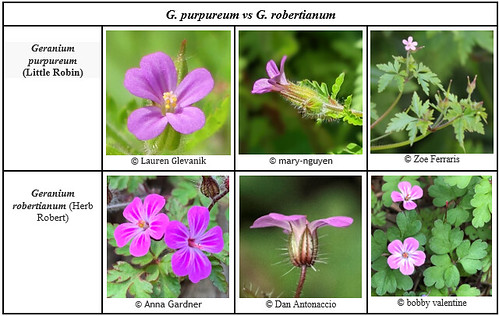How to identify Geranium purpureum (Little-Robin)
This project collects observations of Geranium purpureum (Little-Robin) in California for the purpose of facilitating identification and preventing misidentification of this species in iNaturalist.
Photo tips:
- It’s important to get a picture of the entire plant.
- It's also helpful to get close-up pictures of the face of the flowers, sepals, leaves, and fruits, if present.
- If there are multiple plants in the picture, it’s helpful to crop your photo to focus on the plant of interest.
How to identify Geranium purpureum:
- Stems: The stems are covered in soft hairs.
- Leaves: The leaves are pale green and pinnately lobed or dissected with 5 segments that are ~90% divided to base or midrib.
- Flowers: Small flowers have five petals that come in shades of pink to red-purple with white or darker pink stripes. Petals are broad, unnotched, and clearly separated. Anthers are yellow. Sepal hairs are different lengths and sepals have red glandular tips. Anthers are yellow. Sepal hairs are different lengths and have red glandular tips.
- Fruit: The fruits have 3‒5 collar-like rings and long fibers at the tip.
- Habitat: found in grasslands and woodlands in the San Francisco Bay area and central coast ranges of California.
- Flowering time: March through May.
Similar species:
- Geranium robertianum (Herb Robert)
- Geranium yeoi (Greater Herb-Robert)
- Geranium dissectum (Cut-leaved Crane’s-Bill)

See: https://www.inaturalist.org/observations/94162488
How to differentiate G. purpureum from G. robertianum:
- G. purpureum flowers are much smaller than G. robertianum (5–9.5 mm vs 10–14 mm).
- G. purpureum has less prominent white petal streaks than G. robertianum and the petals are narrower.
- G. purpureum anthers are yellow; G. robertianum anthers are purple. Tip: the pollen of both species is yellow, so when comparing the anther color, pick a flower that has anthers which have not opened.
- G. purpureum sepal and flower stem hairs are glandular and shorter than those of G. robertianum. G. purpureum has sepal hairs that look quite normal, whereas G. robertianum sepal hairs seem excessive.
- G. purpureum is less common than G. robertianum, at least as of the date of this posting.
- The leaves of G. purpureum and G. robertianum are very similar. Stems are often red in both species. It is usually regarded as impossible to differentiate these two species using vegetative features alone.
- Reference: https://cambridgewildflowers.blogspot.com/2020/05/herb-robert-geranium-robertianum-and.html
References:
- Calflora: https://www.calflora.org/app/taxon?crn=8594
- Jepson eFlora: https://ucjeps.berkeley.edu/eflora/eflora_display.php?tid=77514
iNaturalist:
** https://www.inaturalist.org/taxa/57643-Geranium-purpureum
** https://www.inaturalist.org/projects/geranium-purpureum-little-robin
** https://www.inaturalist.org/projects/geraniums-cranesbills-california
** How to identify Geranium purpureum (Little-Robin)






